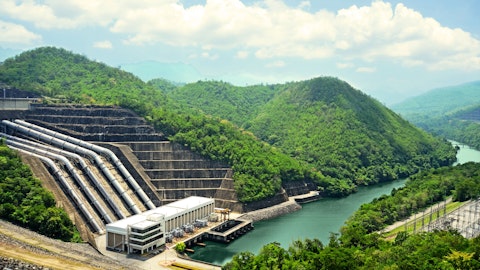In this piece, we will take a look at the 25 most bureaucratic countries in the world. If you want to skip our introduction to bureaucracies, then check out 5 Most Bureaucratic Countries in the World.
A conflict between fast moving firms and slow government organizations is a tale that any CEO would love to talk about. The fundamental difference between right and left wing political ideologies is, among other things, the amount of control that a government can exert over the economy and by extension, private enterprises. The left side of the political sphere argues for greater government control and management, as it argues that corporate and private enterprises often do not work for the benefit of the general public. On the other side is the right, who argues that free enterprise is at the heart of capitalism, and governments should keep their interference in their functions at a minimum.
But, no matter what ideology is in power, both of them manage the government through a bureaucracy. A bureaucracy is defined as an organization that functions on the basis of the technical capabilities of its members, divides tasks into different roles, and operates primarily through a strict chain of command. Naturally, this governance system produces efficient work, but on the other, the rigidities of a command and control structure stifle creativity.
The corporate world and bureaucracies are also often at odds when it comes to regulatory clearance. Companies in high growth and competitive industries work on a fast timeline, and they often feel frustrated if regulatory clearance is required since bureaucracies can also be slower than corporate firms even though they are premised on efficiency. This is because while a firm only has to worry about itself when designing products or investing in growth, a government bureaucracy has to work for the entire country which naturally places a large burden on its members.
So, the next question to ask is whether this timeline mismatch between bureaucracies and firms can lead to economic losses. On the surface, this would appear to be the case as if a company’s plans are on hold then it cannot generate revenue. But what about research? Well, on this front, the Harvard Business Review took a look to see what the costs of excessive bureaucracy in the U.S. Before we get to it, one thing needs to be clear. While bureaucracies are primarily talked about in the context of government operations, technically, any organization with managers, middle managers, and other layers of decision making is also called bureaucratic.
With that out of the way, according to research from the Review, excessive bureaucracies in management in the U.S. ended up costing the economy a stunning $3 trillion in economic output in 2016. This accounted for 17% of American economic output during the time period, for a sizeable impact that could have been avoided if creative approaches towards management were employed. The data shows that during 2014, there were 23.8 million managers, supervisors, and administrators in the U.S. workforce which led to one manager per five employees on average.
This sounds a bit excessive on the surface, and put together, these bureaucratic workers took away 30% of all compensation awarded for work in the U.S. The HBR appears to agree with this, as it cited examples from a variety of companies to show that it is possible to run a large organization successfully without relying on numerous managers. Some examples cited in the research include Nucor Corporation (NYSE:NUE), W.L. Gore & Associates, and a jet engine plant for General Electric Company (NYSE:GE). Including the group of countries part of the Organization of Economic Co operation and Development (OECD), HBR estimates, that the total cost of excess bureaucracy in these countries is a $9 trillion hit to their GDP.
The tussle between the private sector and a government bureaucracy has also made a lot of headlines lately in a segment of the media that is among the most popular. Rocket manufacturer and space logistics services provider Space Exploration Technologies Corporation (SpaceX) is developing its massive Starship rocket in Boca Chica, Texas. Flying a rocket is a bureaucratic business, as agencies such as the Federal Aviation Administration (FAA) and the Federal Communications Commission (FCC) have to analyze its flight path, launch pad viability, and communications infrastructure to ensure that it is safe and does not disrupt life in general. SpaceX, which is known for moving fast in its rocket development, conducted the first Starship orbital test flight in April. Securing approval from the FAA for this test was a long drawn process as the FAA had to work with numerous other government agencies to ensure that SpaceX’s launch facilities did not violate any regulations.
However, the blockbuster April test saw significant damage to the launch pad, and many feared that SpaceX might not be able to rebuild the pad quickly enough, which could cause delays to Starship testing. However, while SpaceX has built its pad, the FAA explained in a statement put out in September that it is currently waiting for the Fish and Wildlife Services (FWS) to clear the rebuilt launch pad. This clearance can take months, as is the case with bureaucracies, and SpaceX is now at the mercy of the FWS for its multi billion dollar rocket.
So, as SpaceX waits for the next Starship flight, we decided to take a look at the most bureaucratic countries in the world.

A finance executive in her office analyzing a stack of documents. Editorial photo for a financial news article. 8k. –ar 16:9
Our Methodology
To compile our list of the most bureaucratic countries in the world, we used data from the World Bank to list out countries with the greatest percentage of public sector employment as a share of their total employment.
25 Most Bureaucratic Countries in the World
25. Republic of Botswana
Percentage of public sector employment as a share of total employment: 27%
Botswana is a landlocked African country with a GDP of $18 billion. It is also one of the least densely populated countries in the world, with roughly four people living per square kilometer.
24. Finland
Percentage of public sector employment as a share of total employment: 27%
Finland is a Nordic European country that has high levels of human development and low levels of income inequality. It has a developed economy and exports a variety of manufactured products.
23. Republic of Ireland
Percentage of public sector employment as a share of total employment: 27%
Ireland is a European country known for having one of the highest GDP per capita in the world. Even though foreign companies account for a large share of employment in Ireland, it still sees nearly a third of its total employment coming from the public sector.
22. Swiss Confederation
Percentage of public sector employment as a share of total employment: 29%
Switzerland is one of Europe’s largest economies. It has a GDP of $841 billion economy and is one of the most developed countries in the world.
21. Republic of Tajikistan
Percentage of public sector employment as a share of total employment: 29%
Tajikistan is a Central Asian country which is also a former Soviet state. It has one of the lowest per capita incomes in the world, which is currently estimated to be worth $1,277.
20. Republic of Malta
Percentage of public sector employment as a share of total employment: 29%
Malta is an island European nation that is also one of the smallest countries in the world in terms of its area.
19. Bosnia and Herzegovina
Percentage of public sector employment as a share of total employment: 30%
Bosnia and Herzegovina is a European country with a GDP of $28.5 billion. It is one of the oldest inhabited regions in the world, with signs of life present from the Paleolithic era.
18. Republic of Moldova
Percentage of public sector employment as a share of total employment: 30%
Moldova is a landlocked European country with a population of just 2.5 million. Like other former Soviet states, it also has a large population percentage employed in the public sector.
17. Iceland
Percentage of public sector employment as a share of total employment: 30%
Iceland is the smallest Nordic country when it comes to its area and economy. Covering an area of 103,125 square kilometers, it has a small $27 billion economy.
16. Federal Republic of Somalia
Percentage of public sector employment as a share of total employment: 31%
Somalia is an African nation that ranks nearly at the bottom when it comes to GDP per capita. Its per capita income is $544, and the country relies primarily on gold and agricultural products for its exports.
15. Grand Duchy of Luxembourg
Percentage of public sector employment as a share of total employment: 31%
Luxembourg is a prosperous landlocked European country. It has the highest GDP per capita in the world of $131,503 and is known for its vibrant financial industry.
14. Republic of Kosovo
Percentage of public sector employment as a share of total employment: 31%
Kosovo is a European country that is also one of the youngest nations in the world since it declared independence in 2008.
13. Kingdom of Saudi Arabia
Percentage of public sector employment as a share of total employment: 32%
Saudi Arabia is an oil rich Middle Eastern nation that is also a monarchy. Not only does it have a large bureaucracy, but also thousands of princes who live on state expenditure.
12. Kingdom of Norway
Percentage of public sector employment as a share of total employment: 33%
Norway is one of the most prosperous nations in Europe, and it sees state control of important industries such as banking and telecommunications.
11. Denmark
Percentage of public sector employment as a share of total employment: 34%
Denmark is another Nordic European nation. Its reliance on free healthcare and education for citizens naturally requires a large and well oiled bureaucratic machine.
10. Mongolia
Percentage of public sector employment as a share of total employment: 34%
Mongolia is a landlocked Asian country that is one of the largest in the world in terms of area but one of the smallest when it comes to population.
9. Kingdom of Belgium
Percentage of public sector employment as a share of total employment: 35%
Belgium is a developed European country with high levels of human development and low income inequality.
8. Republic of Kazakhstan
Percentage of public sector employment as a share of total employment: 37%
Kazakhstan is a former Soviet state that follows Mongolia when it comes to its area and population. It relies primarily on oil for its exports.
7. Micronesia
Percentage of public sector employment as a share of total employment: 38%
Micronesia is a country in the Pacific Ocean that is made up of thousands of islands.
6. Ukraine
Percentage of public sector employment as a share of total employment: 29%
Ukraine is the second largest country in Europe in terms of area. It is a former Soviet state which naturally gives it a big bureaucracy.
Click here to continue reading and check out 5 Bureaucratic Countries in the World.
Suggested articles:
- 20 Most Dangerous Illegal Drugs Right Now
- 15 African Countries with the Most Alcohol Consumption
- Top 20 Most Beautiful Island Countries in the World
Disclosure: None. 25 Most Bureaucratic Countries in the World is originally published on Insider Monkey.





